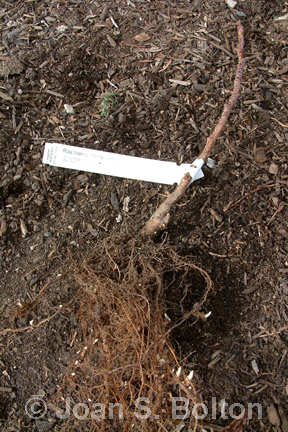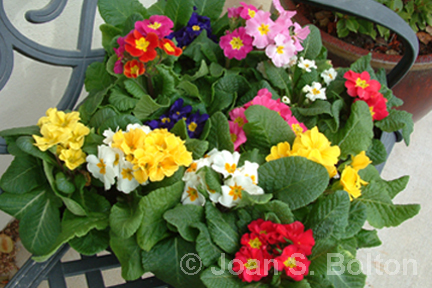
My raspberries have been in ridiculously poor shape, thanks to a herd of eight deer that moved in last summer.
They quickly laid waste to the plants that my husband and I put in last winter. We had planted, bare-root, a dozen Willamette, seven Fall Gold and five Autumn Bliss in new, raised redwood beds that we built. The theory was that the Fall Gold and Autumn Bliss would both produce small spring crops, then larger ones in the fall, while the Willamette would bear most heavily during mid-summer.
That strategy had worked years ago, when we’d planted similar varieties directly in the ground. The trouble then, though, was that although we created perfect mounds of loose, organic soil and set up a drip irrigation system to keep the plants dewy and moist, over time the heavy clay swallowed them up and they literally vanished.

So this time we built raised beds and filled them with loose fertile soil and lots of compost. The setup would have been perfect, except for those darned deer. They’ve become quite comfortable in our garden. One might say they’ve become noticeably fat and sassy, munching their way through not only the ox thistles, which has been a blessing, but many other plants that we would have preferred to keep, thank you very much. Including my new raspberries that had only just begun to produce fruit.
We’ve shooed, yelled and even thrown a few rocks. Broadcasting blood meal was to no avail. Applying Liquid Fence came too late. By then, the raspberries were in shreds.
Yesterday I poked through the remains. Most of the barren stalks still had live roots attached. But nine were dried sticks, attached to nothing.
So I bought nine new bare-root plants, with their tangles of dormant roots just beginning to show new, white growth buds, and swapped them in. This spring, the instant they leaf out, I’m planning to net them and start spraying Liquid Fence. What’s not to love about the smell of putrefied eggs?
Guilty Pleasures

Ordinarily, I’m on a mission to plant Mediterranean plants, California natives and other water-conserving plants in my own garden, as well as those that I design for clients.
Yet at times, it’s impossible to resist moisture-loving annuals. Especially when they’re in perfect form. English primroses, in every flamboyant color of the rainbow, lined the aisle to the register at the nursery where I bought my bare-root raspberries. Compounding the allure: the 4-inch pots were at a fire-sale price of $1.25 apiece, and I had a patch of bare dirt next to my kitchen door.
I bought a dozen for $15. Pat at the register said an earlier customer had bought 60 flats. Let’s see. 60 flats x 16-4″ pots x $1.25 = 960 plants to the tune of $1,200, plus sales tax. Plus soil prep, installation and ongoing watering. I’m not feeling so guilty now!
≈
Copyright, Joan S. Bolton. All rights reserved. Reproduction of text or photos in any form is prohibited without written permission.
≈
